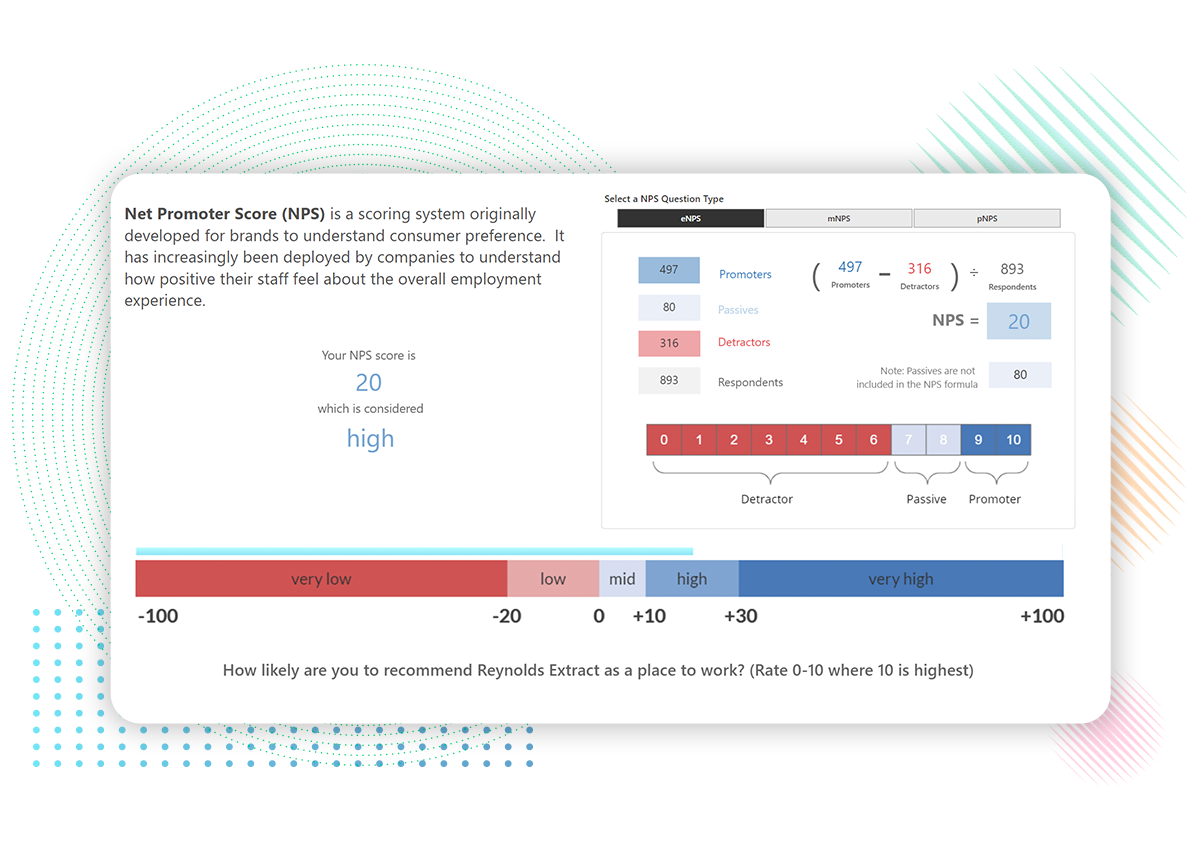November 11, 2024


Looking to boost employee productivity? Discover key strategies like setting clear goals, engaging employees, leveraging technology, and building a positive work environment. These tips can help your organization achieve greater success.
Key Takeaways
- Understanding and measuring employee productivity is essential for organizational effectiveness, as it impacts overall performance and employee satisfaction.
- Factors such as a positive work environment, effective communication, and supportive management significantly influence employee productivity.
- Implementing clear goals, encouraging engagement, and leveraging technology are key strategies for enhancing workplace productivity.
Defining Employee Productivity
Employee productivity refers to the efficiency and effectiveness with which employees complete their tasks and achieve their goals within a given period. It's often measured by evaluating the output (such as products, services, or specific tasks completed) in relation to the resources (like time, effort, and materials) they consume.
High employee productivity typically means workers are completing their tasks efficiently with high-quality results, contributing to the organization’s overall success.
Factors influencing productivity can include:
- Employee motivation
- Skill levels
- Management practices
- Work environment
- Access to necessary tools and resources
Enhancing employee productivity requires deliberate strategies. As work environments evolve, particularly with the rise of remote and hybrid setups, measuring productivity becomes increasingly significant.
Luckily, companies can drive growth and ensure sustainable success by focusing on the collective skills, experience, knowledge, attitudes, and motivations of employees.
Importance of Measuring Employee Productivity


Understanding how to measure employee productivity is essential for enhancing it. High productivity results in more work being completed overall, ultimately impacting line employee productivity, the bottom line employee productivity, and labor productivity.
Measuring productivity serves as a critical indicator of an organization’s health and competitiveness. Doing so allows organizations to gauge workforce performance, which is essential for making informed decisions and implementing improvements. Low productivity can result in missed deadlines, reduced work quality, financial loss, and employee dissatisfaction.
In today’s evolving work landscape, particularly with remote and hybrid arrangements, ongoing productivity measurement is more critical than ever.
Analyzing productivity data helps companies identify areas for improvement and maintain productivity levels, which also enhances employee engagement and overall workplace effectiveness.
Key Metrics for Measuring Productivity
Organizations should use various metrics to effectively measure employee productivity. A common method is calculating overall output divided by overall input. In manufacturing settings, this could involve the number of projects completed or products produced within a certain period.
Revenue per employee and turnover rates are also effective metrics. These provide insights into operational efficiency and the company’s financial health relative to its workforce size.
Additionally, assessing the quality of work alongside the number of tasks completed ensures sustainable productivity, which can be measured using internal quality assessments or customer satisfaction ratings.
Time-tracking software allows teams to note productive hours and prioritize tasks. Benchmarking against industry standards helps understand an organization’s productivity relative to competitors. Using these metrics, companies can gain a comprehensive view of their productivity levels and identify areas for improvement.
Factors Impacting Employee Productivity
Various factors significantly impact employee productivity. A suitable work environment that minimizes distractions and supports comfort can enhance productivity. Conversely, unreliable tools and technologies can slow down productivity, highlighting the need to provide necessary resources.
Employee well-being is another critical factor. Investing in employees’ health and well-being directly correlates with improved productivity and job satisfaction. Healthy and happy employees tend to perform better.
Employers should periodically check on employees’ well-being and provide necessary support to maintain high productivity levels, like regular employee recognition and corporate wellness programs.
Effective communication is essential for task completion and collaboration too. A positive company culture that promotes engagement, provides growth opportunities, and recognizes achievements can significantly boost productivity. Understanding these factors helps organizations enact effective changes and enhance overall workplace productivity.
6 Ways to Enhance Workplace Productivity


Enhancing workplace productivity requires a multifaceted approach. Setting clear goals, encouraging employee engagement, and providing constructive feedback are some key strategies that can help in improving employee productivity, boosting employee productivity, and enhancing workforce productivity.
Here, we'll explore these strategies in detail to provide you with practical insights on how to improve employee productivity.
1. Set Clear Goals and Expectations
Setting clear goals is fundamental to improving productivity. Clear goals help employees focus on tasks and provide a measure of achievement. They reduce workplace uncertainty, enhancing efficiency and effectiveness. Knowing what is expected prevents employees from wasting time second-guessing their tasks.
Breaking down major tasks into smaller, manageable parts simplifies work and makes goals more attainable. This approach fosters better accountability and enhances focus, especially for remote teams.
Managers should set goals, clarify expectations, set deadlines, and trust employees to complete their tasks without micromanaging.
2. Encourage Employee Engagement
Engaged workers demonstrate considerably higher productivity than disengaged employees. Open communication with managers helps employees prioritize tasks effectively and feel connected to their team.
Recognition and reward systems are one way to help enhance employee performance and motivation. Celebrating achievements contributes positively to engagement and productivity. A culture that encourages personal growth and recognizes contributions increases motivation and productivity.
3. Provide Constructive Feedback
Constructive feedback is another way to help improve employee performance. It helps employees learn from their mistakes and understand their performance better. Effective feedback should highlight strengths before suggesting improvements, ensuring it remains balanced and constructive.
Managers should also track individual progress and inform employees about their evolving performance, creating a feedback loop. Consistent performance measurement aids in identifying areas for growth, allowing managers to provide effective feedback and support.
Focusing on strengths and solutions rather than only pointing out errors can boost productivity by showing employees that they're valued and show potential for growth.
4. Leveraging Technology to Maximize Productivity
Technology plays a vital role in maximizing productivity. For example, AI tools and automation can significantly transform the employee experience by assisting with tasks and providing valuable data analysis. Automation software can save time by eliminating human intervention in repetitive tasks, allowing employees to focus on more critical activities.
Project management software like Trello and Asana enhances productivity by streamlining task allocation and progress tracking. Communication software is essential for remote employees, influencing speed and collaboration. Time tracking and task management tools help prioritize work and enhance time management.
Keep in mind, comprehensive training is also necessary to ensure employees fully leverage technology. Providing the right technology and training significantly boosts workplace productivity and employee engagement.
5. Create a Positive Work Environment
A positive work environment is crucial for boosting productivity. Regular employee surveys, one-on-one meetings, wellness programs, and team-building activities can help establish this environment. An open-door policy for communication promotes positivity and enhances morale, as well.
Managers can support employees by maintaining work-life boundaries. Addressing personal issues through supportive policies can lead to improved workplace productivity. Engagement and listening tools are essential for creating a positive environment, boosting productivity by up to 12% due to increased happiness.
Recognizing employees and balancing guidance with autonomy encourages a culture of innovation and responsibility. Informing teams about the significance of their contributions can improve commitment to their job.
6. Balance Work Life and Productivity
Balancing work and personal life is essential for maintaining high productivity. Over 60% of U.S. workers feel their work-life balance is unbalanced. Acknowledging the need for time off, including sick days, mental health days, and vacations, is crucial for employee well-being.
Encouraging employees to unplug during vacations and setting specific time blocks for tasks can enhance productivity. Practicing mindfulness and taking regular breaks can recharge energy levels and improve overall productivity, too.
This balance is particularly important for remote workers, who benefit from the flexibility to balance personal and professional commitments effectively.
Overcoming Common Productivity Challenges
Common productivity challenges include poor time management, multitasking, and a lack of work-life balance.
In fact, research has shown that employees waste approximately 31 hours each month in unproductive meetings. Keeping this in mind, employers should schedule only essential meetings and ensure they are effective and brief.
Ineffective communication can also hinder productivity; improving communication technology and processes is essential. Overworking employees can lead to lower productivity due to increased mistakes and burnout.
Addressing these challenges enhances overall productivity and employee satisfaction.
Best Practices for Remote Workers
While it may seem counterintuitive to some, many remote workers are more productive than in-office employees. For instance, a study by Stanford economist Nicholas Bloom found that remote workers were 13% more productive than their in-office counterparts. This boost in productivity was attributed to fewer breaks, fewer sick days, and a quieter work environment.
However, it's important to have the right environment for maintaining productivity while working remotely. Establishing a dedicated workspace at home is essential for minimizing distractions and enhancing focus.
Implementing a flexible schedule enables employees to work during their most productive hours, positively impacting their output. Limiting unnecessary meetings helps remote employees concentrate on tasks, improving overall productivity.
Modern communication tools facilitate team collaboration and cohesion, especially in remote scenarios. Providing the right technology and tools, such as project management software and communication platforms, is crucial for maintaining productivity.
Continuous Improvement and Monitoring
Continuous improvement and regular monitoring are vital for maintaining and enhancing productivity. Consistently reviewing and revising goals helps maintain focus and ensure progress. Regular check-ins between employees and managers foster structured feedback and goal alignment.
Utilizing data from monitoring tools helps organizations implement targeted improvements, aligning with business objectives. Continuous improvement sustains high productivity levels and adapts to changing work environments.
Summary
In summary, boosting employee productivity involves setting clear goals, encouraging engagement, and providing constructive feedback. Leveraging technology and creating a positive work environment are also crucial strategies. Balancing work life and overcoming common productivity challenges can further enhance productivity.
The journey to improving productivity is continuous and requires regular monitoring and adjustments. By implementing the strategies discussed in this guide, organizations can achieve remarkable productivity improvements and ensure long-term success.



